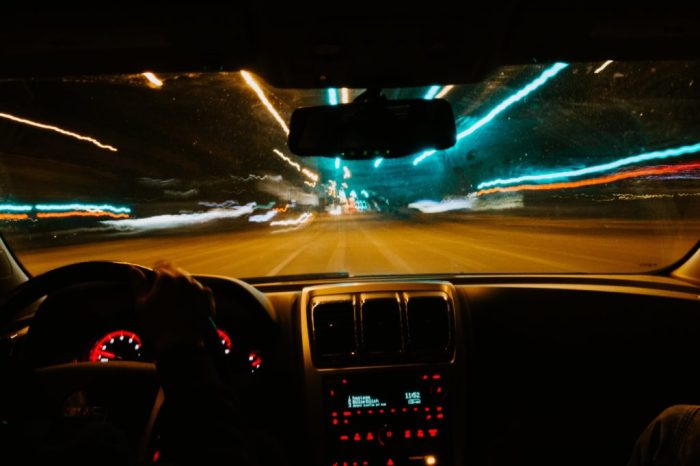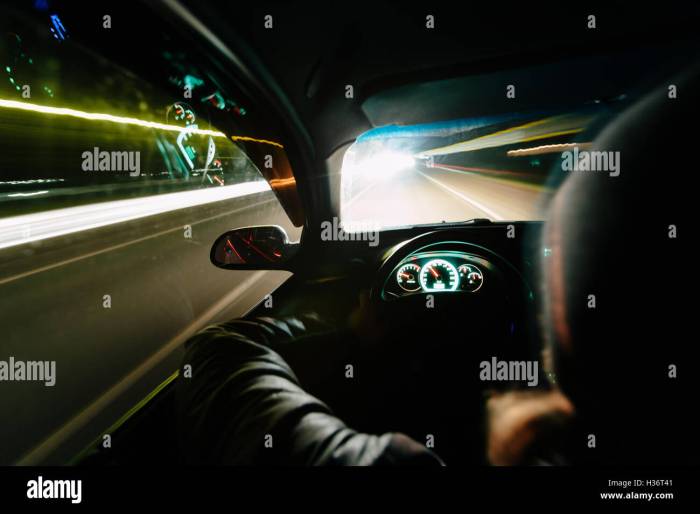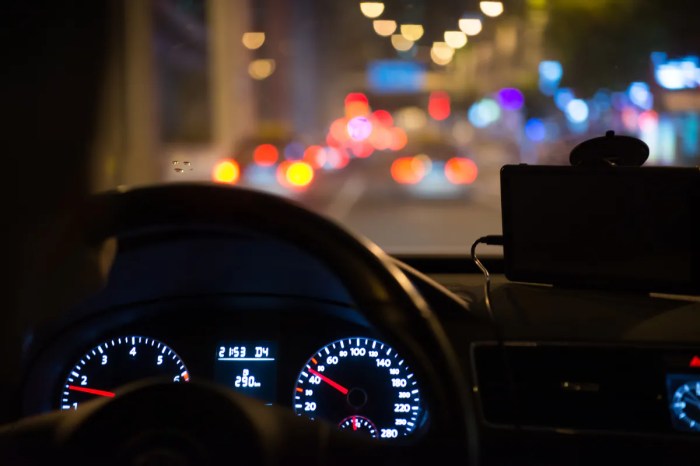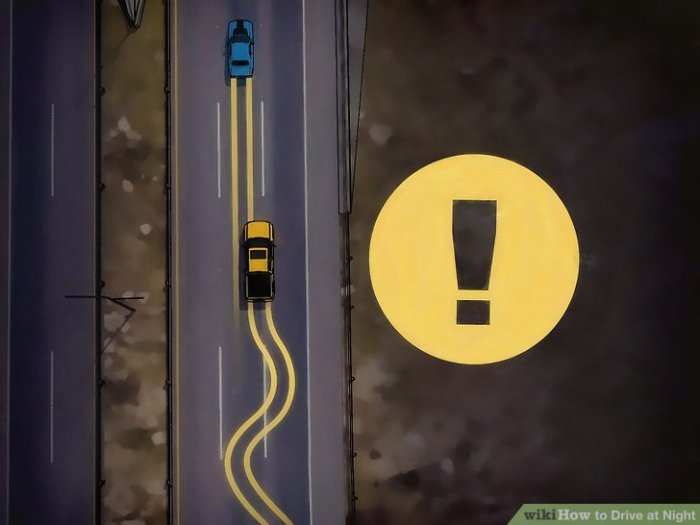How to Drive at Night sets the stage for a comprehensive exploration of safe driving practices after sunset. From adjusting your vehicle to combating fatigue, this guide covers essential tips for navigating the roads in the dark.
Understanding Night Driving

Driving at night requires different skills compared to daytime driving due to reduced visibility and increased risks. It is essential to understand how night conditions impact driving and adjust your habits accordingly.
Reduced Visibility at Night
One of the main challenges of driving at night is the reduced visibility caused by darkness. This limited visibility can make it harder to see road signs, pedestrians, and other vehicles, increasing the risk of accidents. It is crucial to use your headlights effectively and stay alert to potential hazards.
Importance of Adjusting Driving Habits
It is important to adjust your driving habits for night conditions to ensure safety on the road. This includes reducing your speed, increasing following distance, and avoiding distractions like using your phone or adjusting the radio. By being more cautious and aware of your surroundings, you can navigate the challenges of driving at night more effectively.
Preparing Your Vehicle

When driving at night, it is crucial to ensure that your vehicle is in optimal condition to enhance safety on the road. Performing essential vehicle checks before heading out can make a significant difference in your night driving experience.
Essential Vehicle Checks Before Driving at Night
- Check your headlights to ensure they are functioning correctly. Dim or misaligned headlights can greatly reduce visibility at night.
- Inspect your taillights and turn signals to make sure they are working properly. These lights are essential for indicating your presence and intentions to other drivers on the road.
- Verify that all your mirrors and windows are clean and free of dirt, smudges, or debris. Clean windshields and mirrors are vital for minimizing glare and reflections that can impair your vision while driving at night.
- Ensure that your windshield wipers are in good condition and effectively clear away any rain, snow, or debris that may obstruct your view.
- Check your tire pressure and tread depth to maintain optimal traction on the road, especially in wet or slippery conditions commonly encountered during nighttime driving.
- Inspect your brakes to ensure they are responsive and in good working order. Properly functioning brakes are essential for safely navigating the roads, especially in low-light conditions.
Adjusting Your Driving Techniques

Driving at night requires some adjustments to your usual techniques to ensure safety on the road. Here are some key tips to help you navigate the darkness more effectively.
Using High Beams and Low Beams
When driving at night, it’s important to use your high beams and low beams effectively to improve visibility. High beams are ideal for open roads with no oncoming traffic or streetlights, as they illuminate a greater distance ahead. However, remember to switch to low beams when approaching other vehicles to avoid blinding their drivers. Utilize your low beams in urban areas or when following another vehicle to prevent glare and maintain visibility.
Reducing Speed and Increasing Following Distance
One crucial aspect of night driving is reducing your speed and increasing your following distance. Driving at a slower speed allows you more time to react to any unexpected obstacles or hazards that may appear in the darkness. Additionally, increasing your following distance provides a buffer in case you need to make a sudden stop. Remember, it’s better to arrive safely at your destination a little later than to risk an accident due to high speed and close following.
Avoiding Glare from Oncoming Headlights
To avoid being dazzled by oncoming headlights, focus on the right side of the road and use the white line as a guide. This technique helps prevent the glare from affecting your vision and allows you to maintain a clear view of the road ahead. If the glare becomes too intense, reduce your speed and look slightly down and to the right to minimize the impact on your eyes.
Remember, safety should always be your top priority when driving at night.
Dealing with Fatigue and Drowsiness: How To Drive At Night

Driving at night can be challenging, especially when it comes to dealing with fatigue and drowsiness. It’s crucial to stay alert and focused to ensure a safe journey. Here are some tips to help you combat fatigue and stay awake during your night drives.
Recognizing Signs of Fatigue, How to Drive at Night
- Yawning frequently
- Heavy eyelids and difficulty focusing
- Drifting between lanes
- Difficulty remembering the last few miles driven
Strategies to Combat Drowsiness
- Take regular breaks every two hours or 100 miles
- Avoid heavy meals before driving
- Stay hydrated by drinking water
- Open a window for fresh air
Knowing When to Pull Over
- If you start to feel drowsy, find a safe place to pull over
- Take a short nap if needed to refresh yourself
- Avoid relying on caffeine or energy drinks as a long-term solution
- Consider switching drivers if possible to share the responsibility
Final Summary

In conclusion, mastering the art of nighttime driving requires attention to detail and a proactive approach to safety. By following the advice Artikeld in this guide, you can drive confidently and securely, even when the sun goes down.